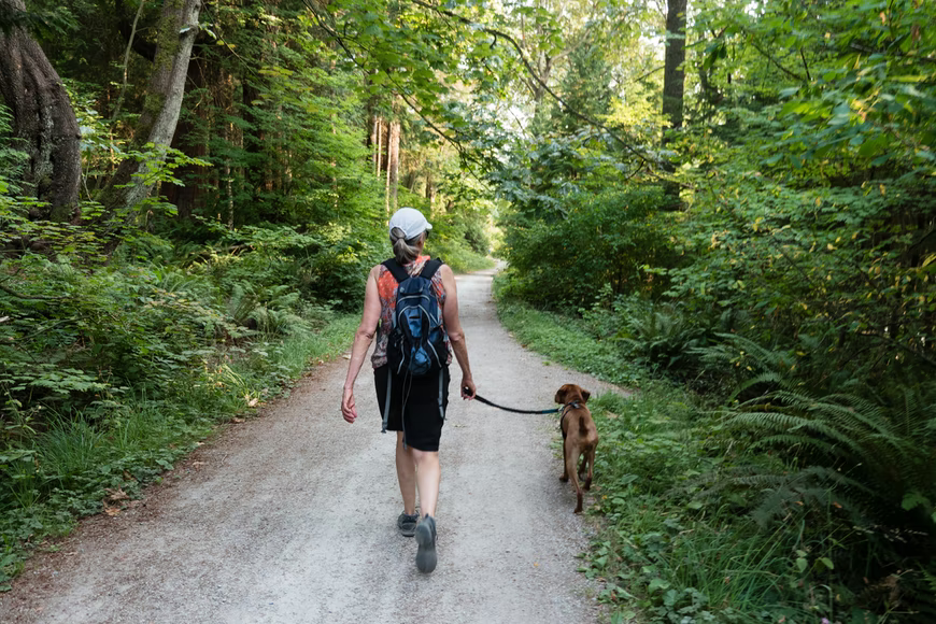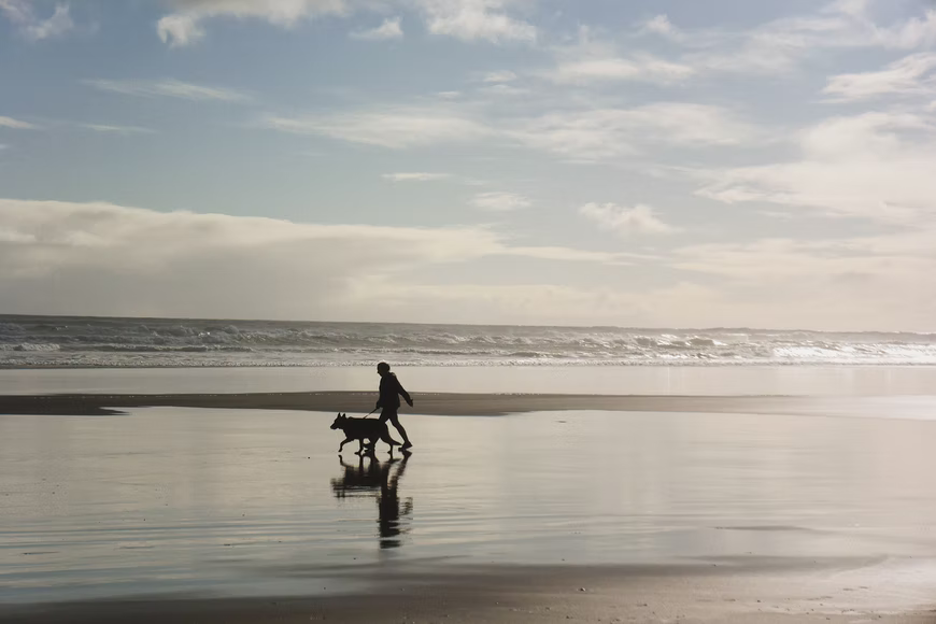Benefits of Walking Your Dog – Why Walk Your Dog

As dog parents, you know that walking your dog is an important part of your daily routine, but a walk is more than just an excuse for a potty break or a fun outing. A daily walk benefits your dog's overall health and happiness.
Not only does it offer the perfect bonding activity between you and your dog, but walking provides physical and mental exercise that your dog can’t get by simply playing in the backyard. Preventative medicine can be one of the best ways to keep your dog happy, active, and healthy.
Read on to learn the 4 benefits of walking your dog, as well as the ideal length to help your pup take advantage of those benefits.
5 Benefits of Walking Your Dog
1. Maintain a Healthy Weight for Your Dog
Across the world, more and more pets are struggling with obesity. In fact, in North America, roughly 40-45% of all dogs aged 5-11 years old are overweight.
Obesity in your dog can lead to a variety of health issues, and it can even shorten their lifespan by as much as 12 months. The good news is that daily exercise, along with careful nutrition, can entirely prevent obesity in your dog.
Daily walks are a great source of exercise to burn off calories and help your dog maintain a healthy weight.
2. Improve Your Dog’s Joint Health
Not only can obesity put additional pressure on your dog’s joints, but your dog’s joints can also get stiff without enough movement throughout the day.
Daily walks keep your dog in motion, giving their joints and muscles a chance to stay active and warmed up. This helps improve your dog’s mobility and fight off painful joint issues later in life.

3. Provide Mental Enrichment for Your Dog
While physical exercise is important for your dog, it’s not the only type of exercise that your dog needs daily.
If your dog stays inside for the majority of the day, they’re likely to become bored—and boredom leads to destructive behaviors. Taking your dog out to discover new sights, scents, and sounds is a fun way to provide the mental stimulation that your dog craves.
Daily mental stimulation helps build your dog’s confidence, reduces their stress levels, and provides an energy outlet that’s even more effective than physical exercise.
When your dog has the chance to explore and sniff out new areas, they engage their brain and channel their energy into a constructive activity. Sniffing is also a naturally calming behavior for dogs.
4. Build Your Dog’s Socialization Skills
On a walk, your dog has the chance to experience many new smells, sights, and sounds for the first time.
Every new experience, like children running or the loud sound of a car backfiring, is a learning opportunity for your dog and helps to fill their “positive associations” bank. The more positive associations they have with unfamiliar things, the more likely they are to react well the next time that experience happens.
Walks also allow your dog to practice interacting with strangers and other dogs, even from afar. This will also aid in building your dog’s confidence around other dogs, helping to ease their anxiety.
5. Creates a Great Training Opportunity
When you walk your dog, you should consider it an opportunity for training.
Dogs don't come with the knowledge to be on a leash. They rely on you to train and guide them on proper leash walking behaviors, as well as other basic manner.
When you go on walks, you can start teaching your dog commands such as "sit," "stay," and "heel," especially if you bring treats to be used during the walk.

Is Walking Enough Exercise for Your Dog?
Your dog's exercise requirements are determined by the breed, age size, weight, and general health. A general rule of thumb is to dedicate at least 30 minutes each day to doing something with your pet. Dogs that are young or specific breeds that were bred for herding or sports activities could require more.
If your pet has a backyard that they can play in, it's important to remember that walking isn't the only method of exercise that's available. Don't expect your dog to develop their own routine for exercise only because you've set them in the outdoors.
Dogs do not self-soothe. Therefore, if you're looking to keep your pet active, play fetch or catch! Find out more ideas about what things you could engage in with each other with the Animal Foundation's guide to Your Dog's Playtime and Fun.
If you're working all day, think about going to doggie daycare, employing an animal walker, or asking an acquaintance to take your pet on a walk during the time. Your dog will love being with you, and you'll be greeted by happy dogs that are eager to meet you.
How to Make the Most of Your Dog’s Walks
Simply taking your dog for a walk is great, but if you want to truly make the most of your dog’s walk, here are a few key tips.
Create a Consistent Walk Routine
Consistency is key to building healthy habits with your dog.
If you’re using walking as a supplement to other forms of exercise for your dog, like playing in the backyard, set aside 15-20 minutes every day for walking. If walking is your primary exercise source, or you have a particularly energetic pup, set aside at least 45 minutes to 1 hour.
With a daily walk routine in place, your pup can have fun while maximizing all the benefits that walking has to offer.
Start Socialization with Your Dog Early
The window of opportunity for socialization is very limited, and a puppy who is not socialized well with dogs, people and other animals until the age of four months old typically does not develop the socialization skills he requires to be an effective canine citizen.
Here are a few great ways to socialize your puppy:- Go to the nearest pet store: A lot of major chains of pet stores, as well as certain independent ones, allow pet owners to bring their pets, and these shops are ideal for puppies to be introduced to new sounds, sights and smells.
- Let them play with other puppies: A lot of communities offer puppy playschools and puppy kindergarten classes. These classes are an ideal way to interact with all puppies, as well as both the puppy and the handler to master basic behavior skills. When socializing puppies, it is better to allow them to play on their own, and then work through their own problems in regard to the appropriate roughness in play.
- Expose your puppy to a variety of humans too: The classes for puppy kindergarten make this simple as every puppy is able to meet all human beings. It is crucial to expose the puppy to women and men, older people, children and elderly, as well as people of all races. Dogs don't view every human being as the same. To a dog, women and men are totally different creatures.
- Expose your puppy to different species: If you plan to have a multi-pet household, introduce your puppy to any other animals that they could meet, such as cats, rabbits, guinea-pigs and similar animals. If you have animals that are more exotic, it is essential to introduce your puppy it as early as is possible but do it in a manner that's safe for both pets.
Looking for Great Places to Walk Your Dog?
We all want a great relationship with your dogs, and walking and socializing them will only build the bond between you two even more. Practice good walking skills and social etiquette for a healthier dog and better relationship with will help keep your pup happy and healthy.
If your dog is bored of your traditional walking route or you’re just looking for new places to explore with your dog, you can tons of great dog-friendly places to visit with Dog Sniffer.
Search through endless parks, shopping districts, hiking trails, and more to find your next great adventure with your dog.
Leave a Reply
You must be logged in to post a comment.


